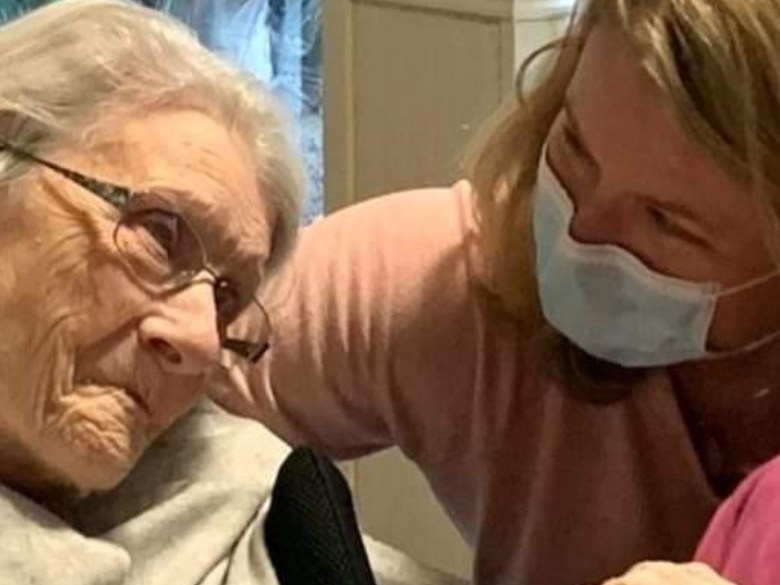
There are 250,000 California residents in long-term nursing homes. Their health and safety are at possible future risk, say a wide range of experts, unless we learn from the tough lessons of the pandemic.
Those lessons are detailed in depth in a taxpayer-funded report released last fall that found “The COVID-19 pandemic had a devastating impact” — not just on residents but their families. The report — California Long-Term Care Facility Access Policy Workgroup — is critical of decisions made by state health officials to lock down residents in nursing homes.
The findings form the basis of proposed legislation, Assembly Bill 2075, from San Diego Assemblyman David Alvarez. The bill is now working its way through Assembly committees in Sacramento. It’s already cleared both the Health and the Aging and Long Term Care committees and is now awaiting action by the Appropriations committee. It faces some of the same hurdles which in 2022 stopped a similar effort.
Alvarez believes his bill addresses the problems detailed by the report. “We have learned many valuable lessons during the pandemic and since the pandemic,” he said.
“Halting visitation rights for our loved ones in long term care facilities has a major impact on their mental health and their physical well being.”
The solution, Alvarez believes, is “the right to in-person on-site access to visitors during the public health emergency, as long as they follow the same safety protocols that are outlined by public health officials and required by staff.” This legislation would go into effect with a declaration of any health emergency declared by state or local officials. Included would be pandemics, epidemics, natural disasters, bioterrorism emergencies, chemical and radiation emergencies, power surge failures, and blackouts.
The bill’s language points out the failure of the on-again, off-again game plan conceived by public health officials to shut down access to anyone but staff. The bill’s background reads, “residents suffered incalculable loss due to prolonged visitation restrictions that separated residents from their families, friends, and essential support persons.”
Dr. Cameron Kaiser, Deputy Public Health Officer with the San Diego County Health and Human Services Agency, counters that the legislation as proposed is a mistake. He spoke at the bill’s hearing representing the Health Officers Association of California (HOAC). “Maintaining visitation social connections for our most vulnerable is extremely important” but creating a law for guaranteeing access has unintended consequences because, he says, “We don’t know what the next pandemic will potentially bring.”
Also opposing the legislation is Betsy Armstrong, senior policy analyst for the County Health Executives Association of California. She says the bill mandating visitation rights doesn’t square with current “public health guidance and measures.” It’s not the way access to nursing home facilities should be handled, she says.
Tony Chicotel, attorney for California Advocates for Nursing Home Reform (CANHR), believes visitors can be trained to “mask up” appropriately. The bill has a provision that would allow access for chosen support providers “who aren’t paid by the facility, so long as they follow the same safety protocols that are required of the staff. And that’s it. It’s really that simple,” he said.
Kaiser says it’s not workable, there is a major difference between outside visitors and staff because “the staff is regulated by state agencies” and is trained “in the use of personal protective equipment in a way that the public generally is not.”
Two years ago Assemblymember Adrin Nazarian (D-46) introduced Assembly Bill 25, similar legislation arguing “the visitation lockouts were increasingly ineffectual, cruel, and ultimately hurt residents more.” It failed to get enough support. It was opposed then as it is now by the HOAC and CHEAC organizations.
A similar effort in Texas to create a right of access during public health emergencies was approved as a ballot measure in 2021. It passed overwhelmingly with 88 percent approval by the voters.
Chicotel’s CANHR sponsored that failed Califronia attempt two years ago and is adamant about the Long-Term Care Facility report ‘s exposing how the support from “outside the nursing homes’ staff” was disregarded and ignored by state officials. The proposed legislation points out that for years this kind of support provided patients with “companionship, psychosocial support, cognitive stimulation, communication assistance, assistance with daily living tasks, such as eating, dressing, and hygiene support,” among other things.
Chicotel says the visitation restrictions ended up being a heavy emotional burden for many like Rosie Montiel who spent evenings and nights with her sister Lilly, but that all ended with the pandemic-driven shutdowns. She was forced to stand outside her sister’s room and try to communicate through a window.
“The most I could do, when there was a friendly nurse or friendly charge nurse, at night, she would open up the window one inch so that she could hear me.”
Lilly had Down Syndrome and also suffered, as did other residents during the closures, from “severe feelings of isolation, increasing cases of malnutrition, and depression,” according to the study. In addition, soon after leaving the nursing facility a hospital doctor found she had a dislocated shoulder and toe.
The doctor told Montiel, “this happened at least six months ago. That was back when she was in the nursing home during the COVID.” Montiel adds, “So you can imagine the physical pain she went through, the emotional pain, the psychological pain, not understanding, afraid of these germs, whatever they were.”
The Long-Term Care Facility report confirmed another suspicion Chicotel had that “public health departments didn’t understand that staff in these situations are actually more dangerous than visitors because the staff go from resident to resident to resident throughout the day.”
A caregiver brought COVID into the nursing home where Denise Brogan’s 96-year-old mother Gabrielle resided. It would kill her — and end her ‘horrendous suffering,” her daughter says.
Gabrielle had generally been very positive and upbeat, Brogan said, but then became very withdrawn.
“There were beautiful people that worked there that cared deeply about her. It’s just when the pandemic hit, and they no longer let in this essential part of her care team, then the care went down,” Brogan said. “And she went down. And so did a whole bunch of her friends.”
Lynn Dedrick’s mother Petey “had Alzheimer’s and she couldn’t remember about the pandemic. She thought I had forgotten about her.”
The health offices believed that they could minimize risk, Dedrick said, “but people were almost in solitary confinement. I mean, they’re alone. And they don’t have a voice. And they don’t know where their loved ones are. And they don’t know why they’re not visiting.”
While Petey has died, Dedrick hopes something good can come out of this difficult time.
“I don’t want anyone else to go through what we did. And I think that anyone who’s been in a similar situation, gets it.”
Asked if she would have been able to follow safety rules if given the chance, she was quick to say,
“I feel like any of us, if we were a designated spokesperson visitor, we can follow the protocol just as well as a CNA, or a nurse or a dietitian.”
Additional coverage of this story can be found on KPBS and its website. A newscast is scheduled for 5 p.m. and 6:30 p.m. on Wednesday.
